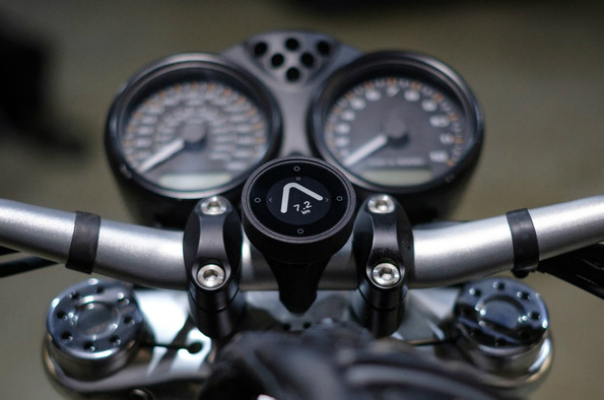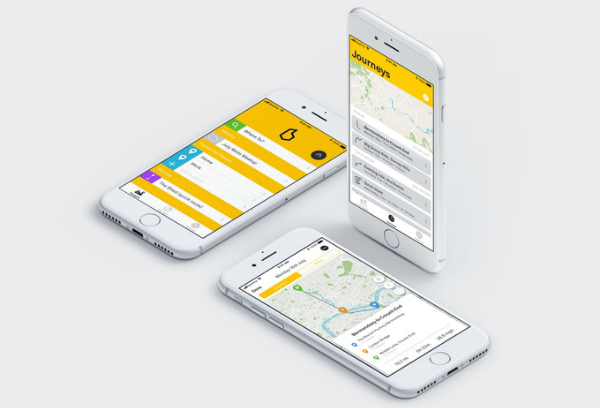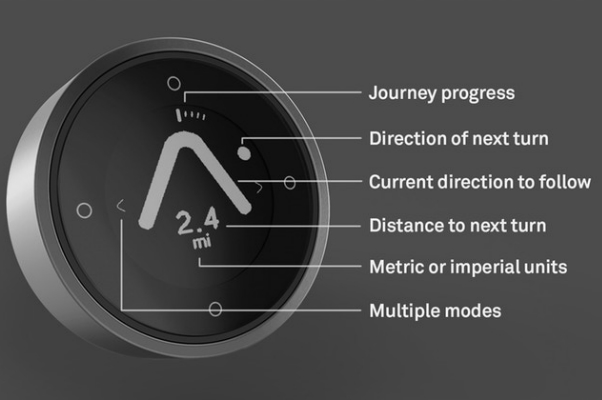Beeline‘s Beeline Moto navigation and route planning accessory for motorcycles and scooters has a single purpose: Providing the simplest, easiest-to-understand navigation cues so riders can focus on the road and not on a display screen.
Beeline Moto features the same easy-to-follow interface for motorized two-wheel transportation that the company first introduced with its bicycle Beeline Bicycle smart compass in 2015. Like the earlier version, Beeline Moto was launched with a Kickstarter crowdfunding campaign.
After a rider pairs the Beeline Moto with a smartphone with the Beeline app, the app and the device will be ready to provide directions by using the smartphone’s GPS signal. According to Beeline, the maps in the app will have global map coverage and automatic updating when the device ships in early 2019.
Beeline says the company plans to partner with the best mapping providers for each geographic region. In the single coverage exception, Beeline states that because of local regulations, it cannot guarantee the software will work in mainland China.
After a rider selects a trip destination on the smartphone app and sets off on the journey, a spare arrow icon on the Moto’s 1-inch transflective LCD indicates the current direction. Just below the arrow, the distance to the next turn displays in either miles or kilometers. The only other indicators on the display are the direction of the next turn and a simple journey progress indicator.
Riders can choose between route or map mode for directions. In route mode, the Moto bases directions turn by turn. When the navigation device is in compass mode, the rider is free to select roads and turns at will, always knowing the Moto display will point to the final destination. All routes are saved in GPX format files that can be reviewed and shared.
More about motorcycle navigation
- Garmin’s Zumo 396 LMT-S helps motorcycle riders find the road less traveled
- Grab your helmet: Google Maps for motorcycles is coming
- Smart glove gives bikers turn-by-turn navigation
- Jarvish adds Alexa and AR to make its motorcycle helmet even smarter
Beeline claims the Moto’s rechargeable battery will last 30 hours without the display backlight (which comes on automatically), 10 hours with the backlight, and 20 hours in blended use.
Customers who order a Beeline Moto have a choice from different styles and types of mounts. When the Moto is installed in the mount, the company claims it is IP67-rated for water and particle resistance.
As Beeline refines and adds features, the company will send automatic software updates. According to the company, it has released eight feature updates for Beeline Bicycle since product launch and will continue the same practice for the motorcycle version.
Perhaps due to the company’s success with Beeline Bicycle, the Beeline Moto‘s 30-day crowdfunding campaign was a blowout success, far surpassing its $50,000 goal with 4,234 backers pledging $669,891.







